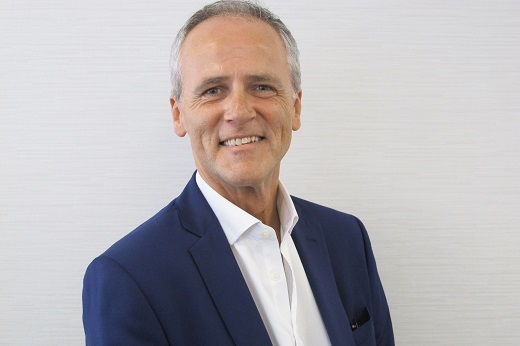Diamond News Archives
- Category: News Archives
- Hits: 1217
Ever wondered how the monetary system of the United States got into the fiat predicament it now finds itself? Did you know that American history has more often used some sort of gold or silver backing than not?
Inspired partly by GoldSilver.com[1] reader Greg V, we created a scrollable infographic of the history of money in the US. What you'll see is that with each monetary change in the US, our currency has gradually been destroyed. We started with 100% gold-backed currency, but via the whims and machinations of politicians, we've ended up with 0% gold-backing. A currency that can be diluted at will; a currency that is ultimately worthless.
How long will this fiat currency called the US dollar hold out? As Mike Maloney has pointed out numerous times,[2] we are overdue for a global monetary reset, the likes of which will cause convulsions the world over. As you scroll through the history, an inescapable question comes to mind: which form of money would you rather hold — fiat paper, or physical gold[3] and silver[4]?

...
References
- ^ GoldSilver.com (goldsilver.com)
- ^ As Mike Maloney has pointed out numerous times, (goldsilver.com)
- ^ physical gold (goldsilver.com)
- ^ silver (goldsilver.com)
- Category: News Archives
- Hits: 992

(IDEX Online) – Responsible Jewellery Council (RJC) Executive Director Andrew Bone will be stepping down as of 27 March, the RJC announced.<?xml:namespace prefix = "o" ns = "urn:schemas-microsoft-com:office:office" /?>
Bone has been Executive Director since the spring of 2015. Under his leadership, the RJC's membership has doubled and the organization laid the foundations for sustainable growth in the future, according to a statement.
“It has been a pleasure and a rare privilege to have served this unique organization as Executive Director,” said Bone. “We have undertaken the review of our standards and laid the ground for the inclusion of colored gems and silver. In addition, we have grown the management team and provided them with the resources to build on past success as we look ahead to a successful future.”
Prior to serving as RJC Executive Director, Bone had a long career at De Beers.
David Bouffard, Chair of the Responsible Jewellery Council, said: “We are grateful for Andrew’s leadership at the Responsible Jewellery Council in supporting the continuous improvement in the integrity of the global jewelry supply chain. His vision has further established the Responsible Jewellery Council as the standards and certification organization for the global jewelry industry. The Board offers our sincere thanks to Andrew for his commitment and service.”
The RJC added that its Board of Directors has begun a global search to identify the best possible successor and to ensure a smooth transition....
- Category: News Archives
- Hits: 1288

De Beers Group, in partnership with United Nations (UN) Women, is pleased to announce the launch of a three-year capacity-building programme to improve the livelihoods of more than 1,200 women micro-entrepreneurs in Botswana, Namibia and South Africa.
The programme is designed to equip women micro-entrepreneurs with business and management skills to build their confidence and capacity to operate and grow successful small businesses. It will focus on providing training to enhance understanding of business concepts, including accessing markets, increasing market share, generating income, creating jobs, and supporting effective decision-making, communication and negotiation skills.
Tailored specifically for each country, the programme will be delivered with local implementation partners and focus on regions that have high levels of unemployment and where formal job opportunities are limited. It has been designed to ensure ongoing sustainability by building the capacity of locally-based trainers to understand the specific challenges faced by women micro-entrepreneurs, build access to peer support networks and support the programme participants on an ongoing basis to implement the skills gained. A wide variety of micro-businesses will be eligible to participate in the programme, spanning retail, hospitality, agriculture, catering, produce, manufacturing and education.
Bruce Cleaver, CEO, De Beers Group, said: “I am delighted to launch this programme as part of De Beers Group’s commitment to stand with women and girls around the world, especially in our diamond producing countries where women play a crucial role in supporting their local communities. When you support women business owners, you support a community more broadly as women are proven to reinvest more of their income back into the community and to actively support the creation of jobs for others. Through these programmes, we hope to help equip women entrepreneurs with the skills, training and confidence to build successful and sustainable...
- Category: News Archives
- Hits: 1066
After consecutive quarters of near-record profit growth, companies are starting to lower expectations.
With third-quarter earnings right around the corner, S&P 500[1] companies are cutting their outlooks at levels not seen since the first quarter of 2016, when corporate America was in a profits recession.
In all, 98 companies have offered guidance — 74 have provided a negative outlook, meaning they expect earnings to come in below Wall Street estimates, while just 24 have been positive, according to FactSet. The 76 percent negative-to-positive balance is above the long-term average of 71 percent.
Moreover, it comes at a pivotal moment as the Dow Jones industrial average[2] and the S&P 500[3] both hit records last week.
Source: FactSet
Earnings have been on a roll lately, with both the first and second quarters posting growth rates around 25 percent. Those growth rates, though, are expected to diminish considerably. The third quarter is projected to come in at 19.3 percent while the fourth quarter likely will slow to 17.3 percent, resulting in a full-year rate of a robust 20.4 percent, FactSet estimates.
In 2019, those numbers change: 7.1 percent and 7.3 percent for the first two quarters, respectively, and a full-year rate of 10.3 percent.
While that's still a healthy growth rate, investors need to be attuned to changing expectations and what that might mean for the market.
Tobias Levkovich, chief U.S. equity strategist at Citigroup, cast some doubt on the expectations for 2019, telling clients, that "we believe current double-digit forecasts for profit growth seem excessive. Thus, caution may be appropriate."...
- Category: News Archives
- Hits: 1047
One of the great ironies of the 2008 financial crisis is that it was sparked by a product created from a historically safe investment asset: residential mortgages. In the past quarter century, delinquency rates of single-family home mortgages hovered below 3%[1] for the most part except for the time around the Great Recession, according to the Federal Reserve Bank of St. Louis. Then Wall Street bundled mortgages of various qualities into complex, opaque securities to be bought and sold, often using debt to turbo-charge the investment. When defaults began on Main Street, the tremors reached all the way around the world.
Today, the financial crisis seems like a footnote in history. But like other crises, it has sparked a period of soul-searching. What signs that a crisis was brewing did experts and regulators miss? Why didn’t regulatory reforms in the past prevent it? How could regulators stop another crisis from happening? What are the lessons from this and other meltdowns? These and other questions were the focus of a panel at the “Financial Markets, Volatility, and Crises: A Decade Later” conference held recently in New York by Wharton’s Jacobs Levy Equity Management Center for Quantitative Financial Research[2].
While this year is generally acknowledged to be the 10th anniversary of the crisis, in actuality there is “no real consensus about when it all began,” said Wharton finance professor Richard Herring[3], who moderated the panel. Some point to 2006 as the start, when home prices peaked, while others think it began with the 2007 collapse of two Bear Stearns hedge funds that bet heavily on subprime mortgages. Perhaps it was when BNP Paribas froze withdrawals[4] from $2.2 billion worth of funds in the same...

